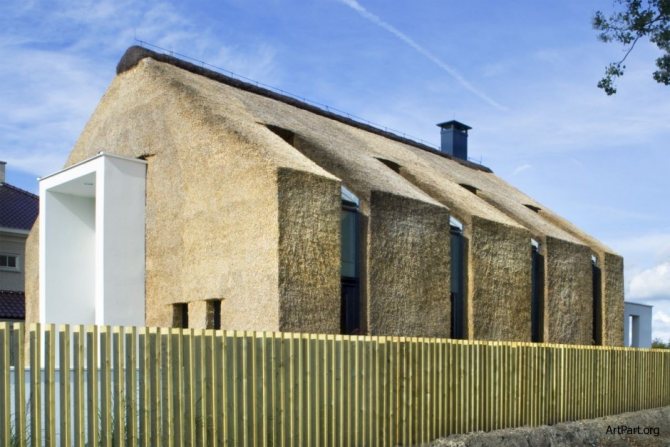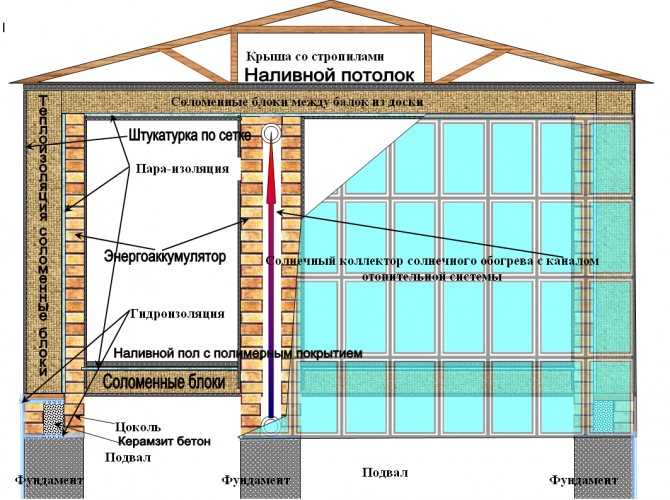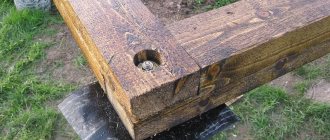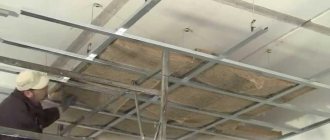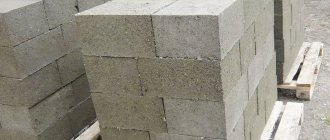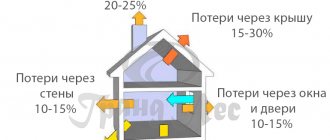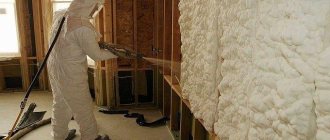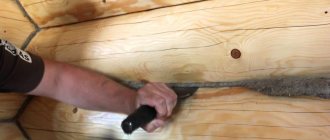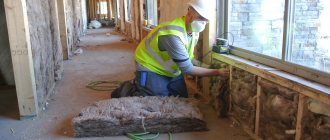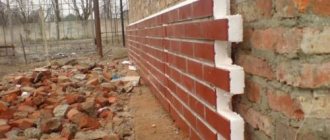Hello, our dear readers.
We live in a difficult time. The cost of living is growing exponentially every day, forcing to save on literally everything, or, at least, try to do it. Of course, the turn came to building materials. So, some are trying to figure out: what is clay as insulation.
The product is essentially "ball", it is not necessary to buy it in a building store, take it and dig it, there are places for this in any village. We will also look for the truth, because if the "Kulibins" are right, then there is no point in buying polystyrene, questionable in terms of ecology.
A bit of physics
Before delving into the technological moments of using the product, let's look at its physical and technical characteristics. And they are not very encouraging. So, the density of solidified clay is 1600-2400 kg / m3 (slightly less than that of concrete), and the thermal conductivity is 0.7-0.9 W / m ° C.

It turns out that clay as a wall insulation is, to put it mildly, useless, so why is it still used today?
The fact is that this material is an excellent binder, the strength of which is in no way affected by sucrose found in organic fillers (for concrete it is destructive), and this, in turn, opens up the widest scope for maneuver.
Clay with sawdust as insulation
One of the most popular options is clay with sawdust for ceiling insulation. Wood shavings, especially in their loose state, retain heat well, and they can be collected in any carpentry shop for a nominal fee.
There is only one drawback: over time, the loose mass sags, while losing some of its thermal insulation properties.
But if it is mixed with gypsum or liquid clay, the "fluffy" structure will remain for a long time, which means that the use of such technology is not meaningless.
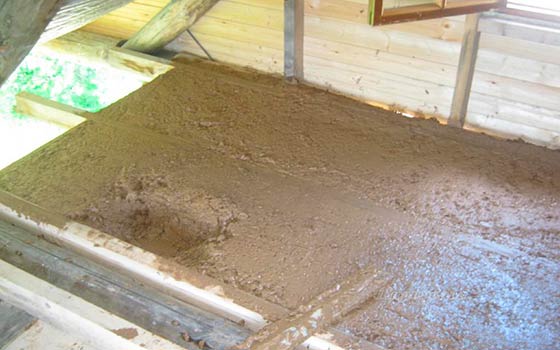

Process technology
Insulation of walls or ceilings is done in approximately the same way. First, preparatory work is carried out, the surface is prepared for the application of insulation. Then proceed directly to filling the frame with clay mortar.
Surface preparation
Walls or ceilings at the start must be covered with waterproofing material. If the film does not cover the surface in a continuous piece, the material must be overlapped. This will ensure the maximum density of the waterproofing film.
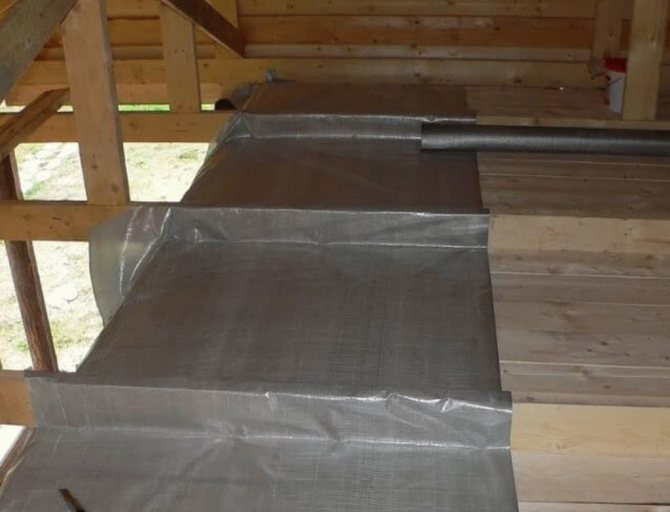

Wooden beams are attached every 30-40 cm. They will form the frame for filling with the mixture.
Preparation of clay mortar
It all starts with a properly prepared mixture. This factor is decisive. It determines the result and effectiveness of home insulation. When preparing the mixture, it is important to observe the exact proportions. The process of preparing a solution from clay consists of two stages:
- Pour the clay with water, leave for a few days. The mixture should become homogeneous and resemble the consistency of thick sour cream.
- The finished mixture of clay and water must be mixed with sawdust in the proportion: take 2.5-3 buckets of sawdust for 1 bucket of clay. They must be small, without large pieces. It is recommended to use sawdust from coniferous trees or oak.
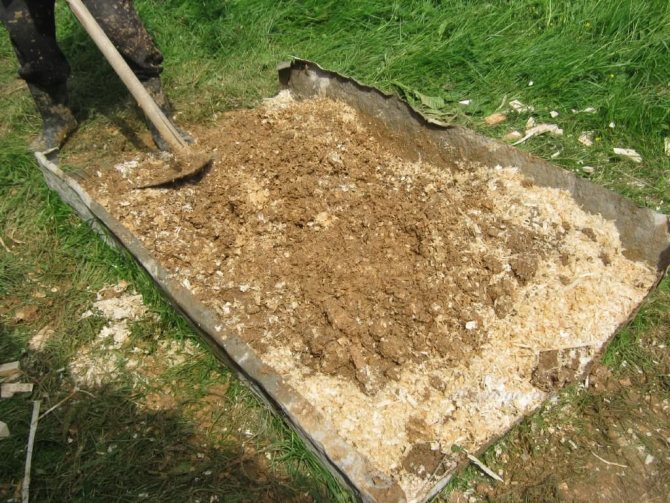

The resulting mixture can be used immediately or the next day. Since the clay dries slowly, the mixture can last longer.
The final stage is the application of the prepared insulation in the resulting gaps between the beams.
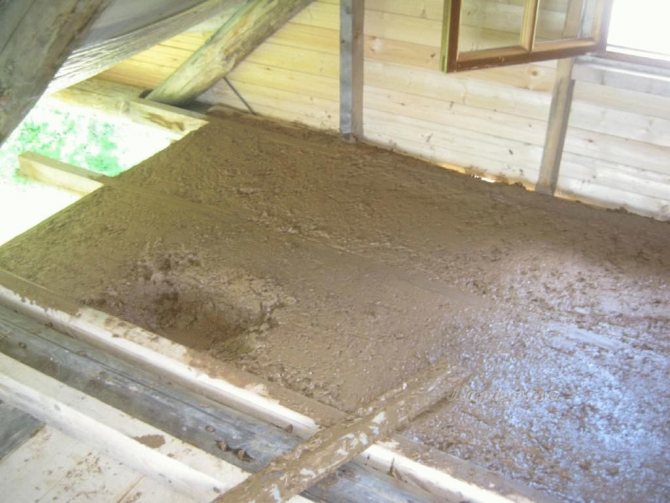

If small cracks appear during the application of the solution, they must be immediately moistened and rubbed over with liquid clay. This thin layer can then be covered with a 5 cm layer of sawdust.
After filling all the cells, you need to be patient for 2-4 weeks. This is about how much the clay will need to completely dry and harden.
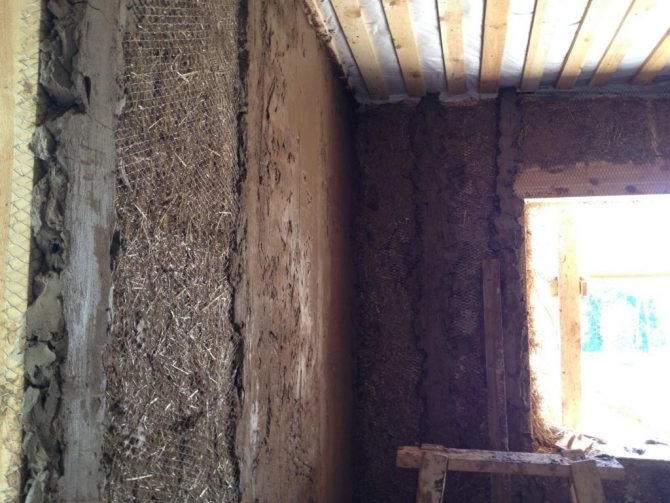

Wall finishing works
After the clay mixture has completely dried, the final stages of work are performed:
- plastering surfaces;
- final finishing.
The ancient method of using clay is a great alternative to expensive materials. It has many advantages and a few minor disadvantages. You don't need to spend so much time and effort once in order to enjoy the result of your labor for many years.
Looking back in time, it is safe to say that the old methods of using clay in construction, although they have lost their popularity over the years, remain reliable, proven and safe.
Filontsev Victor Nikolaevich
On the site: Author and editor of articles on the website pobetony.ru Education and work experience: Higher technical education. Experience in various industries and construction sites - 12 years, of which 8 years - abroad. Other skills and abilities: Has the 4th group of electrical safety approval. Performing calculations using large amounts of data. Current employment: For the last 4 years he has been working as an independent consultant in a number of construction companies.
Recipe
If you are interested in clay with sawdust as a heater, the proportions are simple. For three buckets of clay, two buckets of wooden shavings are taken, all this is mixed and the space between the logs is filled with the resulting mass.
With such insulation, you can easily not only walk, but also dance, but you cannot call it too effective. Of course, the proportion of wood material can always be increased, but then the insulation will lose its strength, which means that some kind of floor will have to be invented on top of it.
Bath ceiling insulation
It is known that warm air can move upward. Therefore, without ceiling insulation, it will not be possible to keep the heat inside the room. Let us analyze in more detail what layer of clay is needed to insulate the ceiling of a living room.
We suggest that you familiarize yourself with: The height of the bath from floor to ceiling
Ceiling insulation is as follows:
- after the construction of the walls, beams are laid on them, which have great strength;
- on the underside of these beams, a sublattice is lined;
- then the clay is diluted with water and thoroughly mixed with fine straw, the finished solution is placed on a sublattice;
- in the middle of a layer of clay with a filler, a plaster mesh is placed, which protects this layer from cracks.
Thus, it completely covers the ceiling of the future room. A layer 20-30 cm thick is recommended. After 100% drying, this structure will take on a solid appearance, and the filler and reinforcement will maintain the integrity of the layer.
You will need to pre-install the props, which will be removed after the structure is completely dry.
When building a bath, the same principle is used. It should be borne in mind that the bath contains a large amount of evaporating moisture that can soften the clay ceiling.
When insulating the ceiling of a bath with clay, the following steps must be followed:
- it is important to take care of the integrity of the future clay structure in advance; for this, a vapor barrier material is placed under it;
- a high-quality hood is installed, capable of removing excess evaporation;
- humidity must be controlled by applying forced draft after using the bath.
Clay is widely used to insulate the ceiling of a bath. After using it, dry the interior thoroughly.
Saman as insulation
Another interesting use for clay is adobe. Previously, it served as the main structural material for the construction of walls, but today it is used only as insulation.
Here, the filler is no longer sawdust, but straw. Once again, an environmentally friendly product with excellent thermal insulation properties, and again the purchase of which will not ruin your budget.
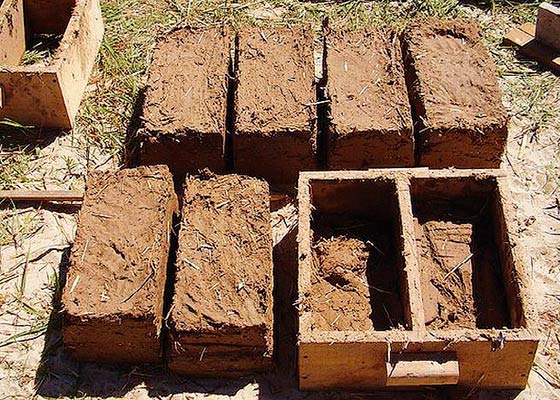

To acquire adobe, you only need to have a wooden shape and a desire to work. Kneading (and kneading clay with straw with feet) is usually done right next to the clay quarry, there the forms are filled with the resulting mass, and the blocks are dried there.
The whole process is quite time consuming, but if this item does not bother you, you can get a material with a thermal conductivity of 0.1 W / m ° C, and this is already a pretty good indicator.
How to insulate a house with straw and clay outside with your own hands + Video of a frame house with hay
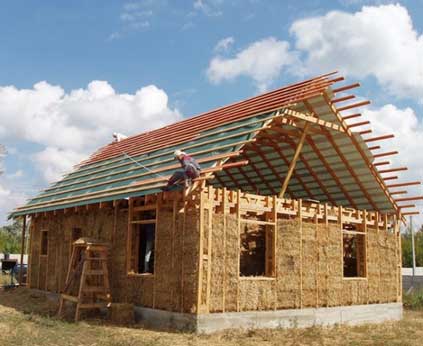

A large amount of insulation with different properties and at different prices is presented on the construction market today.
Thermal insulation of a house with straw blocks (construction of frame houses made of straw) is one of the new concepts for the construction of modern housing using ecological natural materials.
This construction technology originated in the 80s of the XIX century in the USA. The technology of this construction was developed by the first settlers of the state of Nebraska.
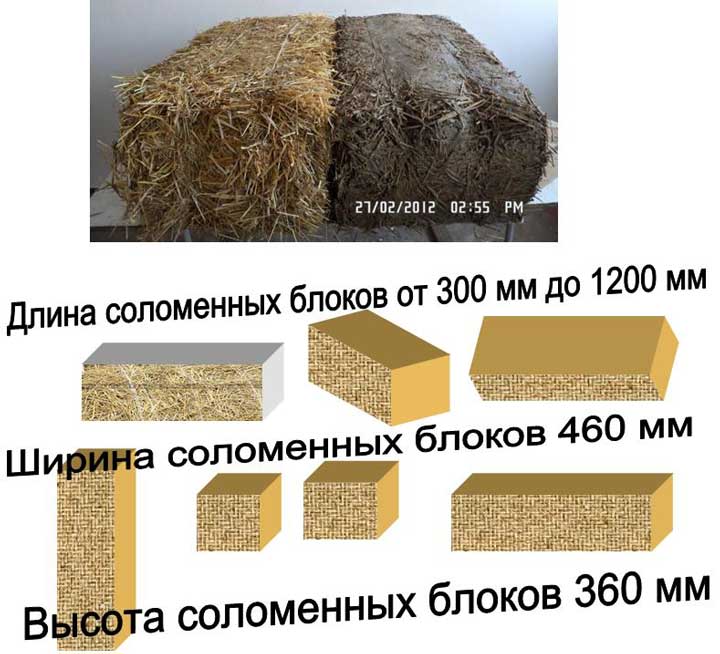

The appearance of straw houses was due to the lack of other building material in the steppe zone, where the state of Nebraska is located. Straw block construction became possible with the advent of the first mechanical balers, which produced straw blocks of sufficient density and strength.
Some of the straw buildings built at that time still stand today. Not only residential buildings were built from straw, but also schools, shops and other structures. For the most part, these are one-story buildings with an area of no more than 80 m2.
Straw, as an environmentally friendly and effective material for home insulation, is recognized by construction experts around the world. Today, house insulation with straw is used not only in the construction of private one-story houses and cottages, but also in the construction of high-rise buildings. This insulation technology is gaining popularity in Russia as well.
In terms of thermal conductivity, straw is 4 times more efficient than wood and 8 times more efficient than brick. That is, a house built of straw or with the use of insulation from straw blocks will need to be heated 4 times less than a wooden one and 8 times less than a brick building.


Due to the increased content of silica, straw is more durable and stronger than building materials made of wood. Wood surpasses straw in its ability to "breathe", i. E. absorb moisture from the environment and, if necessary, release it back into the air. Straw is also distinguished by excellent vapor barrier properties, due to which the room "breathes" (ventilates) even with closed windows and doors.
The advantages of straw insulation do not end there. Thanks to its porous structure, straw is also a good sound insulation material. Therefore, today it is quite popular to insulate walls with straw, as well as to insulate the ceiling and interior partitions with straw.
Thus, straw can be considered just an ideal option for home insulation. It meets all the requirements of the most picky developer:
Most often, straw blocks are used to insulate the walls of a frame house. Straw insulation is carried out exclusively outside the building and only in the summer. Weather conditions also play an important role; warm sunny weather is ideal for such work.
The algorithm of work is extremely simple and the installation of insulation can be easily done by hand.
The entire course of work can be divided into the following stages:
Preliminary preparation of straw insulation involves soaking the blocks in a 10% solution of copper sulfate.Immediately before installation, the insulation should be thoroughly dried.
Fastening of straw blocks is done with iron rods located perpendicular to the foundation and passing through the "body" of the block.
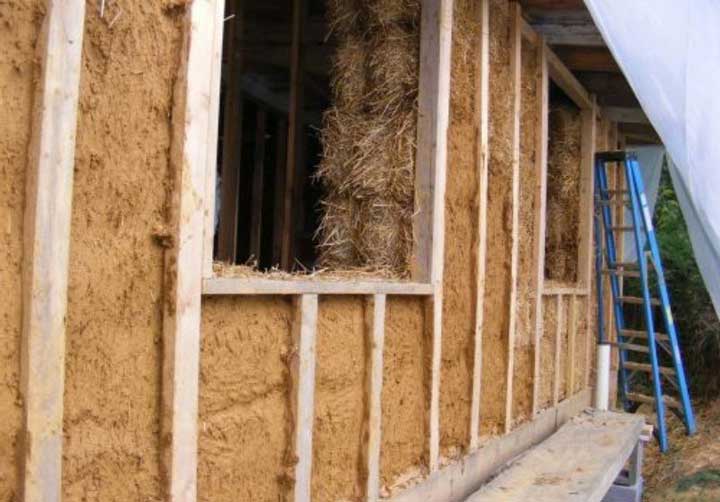

After fixing the blocks, the finished straw wall is covered with a layer of plaster (clay-cement mixture). Plaster and finishing perform, in addition to decorative, also a protective function.
Insulation of walls outside with straw requires the application of a layer of "breathing" plaster over the straw blocks, which will protect the natural insulation from decay, fire, insects and rodents. To protect against decay, you should also monitor the absence of leaks. Only a high-quality compressed and dry straw block meets all the declared characteristics.
The fire hazard of straw is much lower than that of wood. Straw compressed into bales without access to air practically does not support combustion at all.
The high density of straw compaction does not allow rodents to breed. Rats, mice and other rodents are simply not able to gnaw through the passage in tightly pressed blocks of straw, many put metal nets underneath.
Insulation of a wooden house with straw is carried out using pressed straw
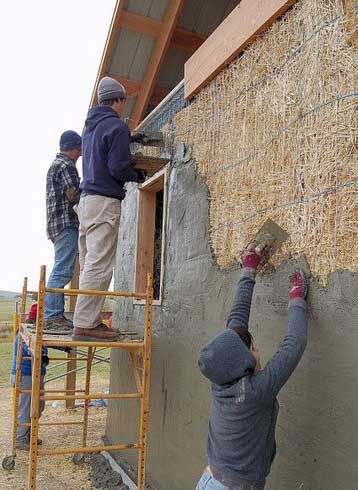

blocks made from the stems of various cereals. Most often, rye straw is used, since it is it that contains the most silica in composition and rodents do not eat it. This element in the composition of straw fiber provides the material with proper density and resistance to biological damage.
It is thanks to its strength and resistance to rodents that not only roof insulation with straw can be carried out, but also insulation of the attic and walls.
Straw blocks are easy to install, insulating a frame house in this way is available with your own hands. And in case of damage to a part of the insulation block, it is easy to replace it with a new undamaged block.
Summing up all of the above, we can draw the following conclusion: straw blocks of straw houses are quite cheap, environmentally friendly and safe for humans.

